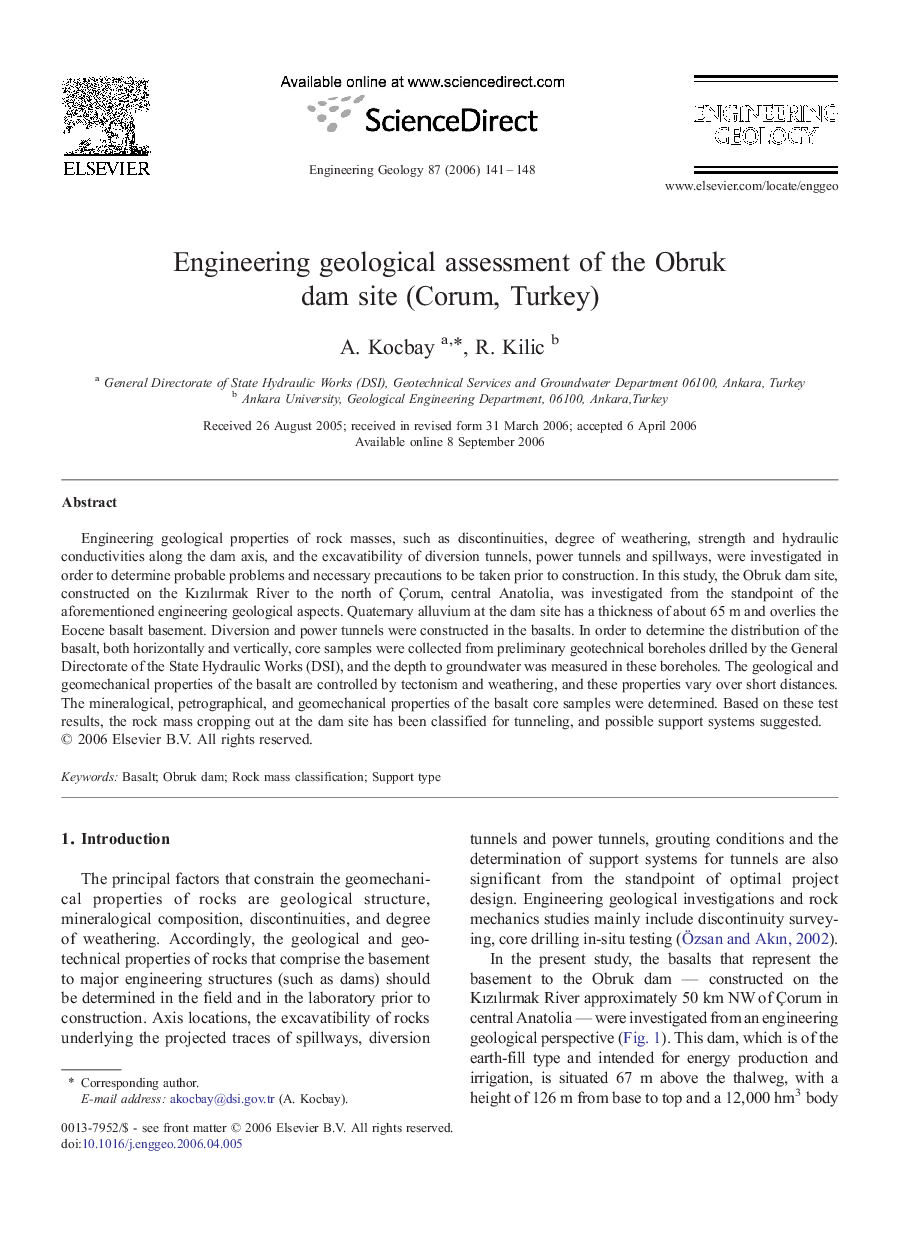| Article ID | Journal | Published Year | Pages | File Type |
|---|---|---|---|---|
| 4744753 | Engineering Geology | 2006 | 8 Pages |
Engineering geological properties of rock masses, such as discontinuities, degree of weathering, strength and hydraulic conductivities along the dam axis, and the excavatibility of diversion tunnels, power tunnels and spillways, were investigated in order to determine probable problems and necessary precautions to be taken prior to construction. In this study, the Obruk dam site, constructed on the Kızılırmak River to the north of Çorum, central Anatolia, was investigated from the standpoint of the aforementioned engineering geological aspects. Quaternary alluvium at the dam site has a thickness of about 65 m and overlies the Eocene basalt basement. Diversion and power tunnels were constructed in the basalts. In order to determine the distribution of the basalt, both horizontally and vertically, core samples were collected from preliminary geotechnical boreholes drilled by the General Directorate of the State Hydraulic Works (DSI), and the depth to groundwater was measured in these boreholes. The geological and geomechanical properties of the basalt are controlled by tectonism and weathering, and these properties vary over short distances. The mineralogical, petrographical, and geomechanical properties of the basalt core samples were determined. Based on these test results, the rock mass cropping out at the dam site has been classified for tunneling, and possible support systems suggested.
